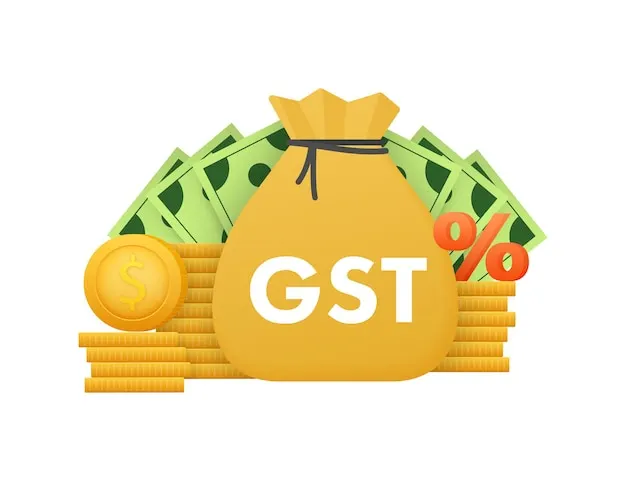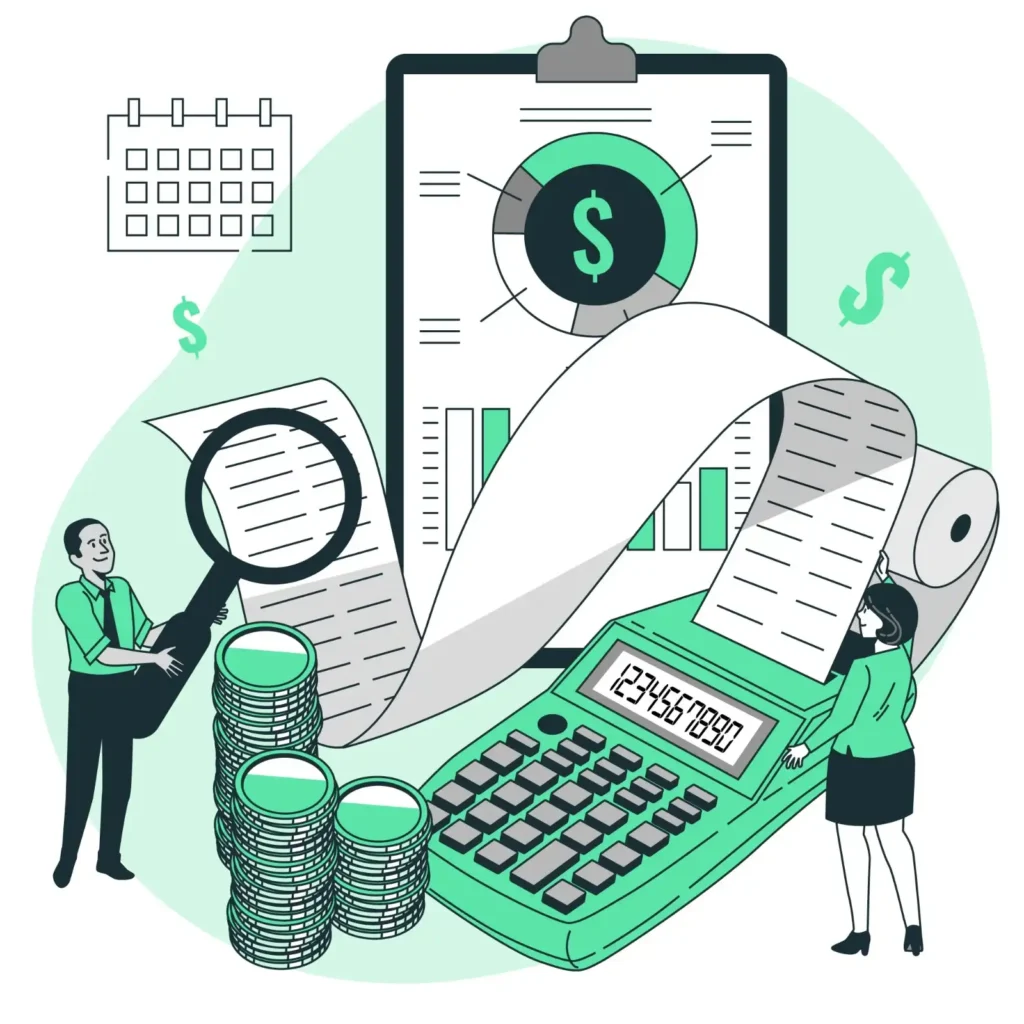
Table of Contents
Running a business in Brampton comes with many responsibilities—learning about sales tax is not always included. Yet, not understanding GST, HST, and even QST can mean costly mistakes and compliance issues. Most business owners are unsure which taxes they apply, when they must register, or how to file properly.
This confusion can result in late filings, penalties, and forfeited input tax credits, reducing profits and sanity.
The good news? Compliance with taxes in Ontario needn’t be intimidating. This guide clarifies everything businesses need to learn about sales taxes and simplifies GST, HST, and QST compliance in Brampton.
What Are GST, HST, and QST?
It is necessary to know the GST, HST, and QST variations if you are conducting business in or selling to Canadian customers. Each of these taxes applies to a specific jurisdiction and has particular rules that impact how you charge, collect, and remit sales tax.
1. GST (Goods and Services Tax)
GST is a 5% federal levy which applies to most goods and services sold in Canada. GST is applied everywhere in Canada unless the province has harmonized it with its provincial tax.
- Who imposes it? Businesses in all Canadian provinces except for provinces with HST.
- When is it imposed? On taxable goods and services upon sale or billing.
- Who collects it? Registered companies remit GST to the Canada Revenue Agency (CRA).
2. HST (Harmonized Sales Tax)
HST consolidates the federal GST and provincial sales tax (PST) into a single tax. The province of Ontario has HST applied to it.
- HST in Ontario: 13% combined (5% GST + 8% PST)
- Why it matters in Brampton: Brampton-based companies must charge HST on most products and services sold in the province.
- Where else does HST charge? Newfoundland and Labrador, Nova Scotia, New Brunswick, and Prince Edward Island.
3. QST (Quebec Sales Tax)
QST is a provincial sales tax unique to Quebec, presently 9.975%. Though it doesn’t charge in Ontario, it kicks in if your Brampton business ships to clients in Quebec.
- Why it matters: If you sell or ship to customers in Quebec, you may be required to register for, collect, and remit QST under Quebec tax law.
- Who collects QST? Revenu Québec, not the CRA, collects it.
How do These Taxes Apply to Businesses in Brampton?

Compliance with sales tax is complex, especially for businesses selling in a multicultural market like Brampton. Understanding how GST, HST, and QST operate is a necessity for legal and financial success as a service business, retailer, or internet merchant.
Overview of Tax Compliance in Ontario
Ontario tax compliance involves registration, charging, collecting, and remitting the HST to the Canada Revenue Agency (CRA). If your business has gross revenue of more than $30,000 in a calendar quarter or four consecutive quarters, you are required to register for an HST number.
Maintaining proper records, issuing compliant invoices, and filing timely returns are all important aspects of staying compliant. Failure to do so could result in audits, penalties, and fines.
How GST/HST Operates for Ontario-Based Businesses?
As Ontario is a participating HST province, businesses in Brampton charge 13% HST (5% GST + 8% provincial share) on most taxable goods and services.
- You must be registered for HST if your yearly revenue is more than $30,000.
- If your sales fall below the threshold, you can offer to register and recover Input Tax Credits (ITCs) on eligible expenses.
- You must clearly mark HST charges on invoices and accurately compute tax amounts.
For example, if you’re selling a product for $100 in Brampton, you must charge $13 HST, and so the total will be $113.
Out-of-Province Sales and Application of QST
When selling to customers who do not reside in Ontario, your business needs to consider destination-based tax rules:
- To other provinces that have HST: Charge the corresponding rate of HST (e.g., 15% to Nova Scotia).
- To provinces with GST alone: Charge 5% GST.
- To Quebec (QST jurisdiction): In case your total annual sales to consumers in Quebec exceed $30,000, you may need to register for QST with Revenu Québec even if your business is incorporated in Brampton.
When and how do I register for GST/HST/QST?
If you run a business in Brampton, it’s important to know when you need to register for GST, HST, or QST. Here’s a simple guide to help you understand the basics.
Do I Need to Register for GST/HST?
You must register if:
- Your business earns $30,000 or more in total sales in one year.
- This includes money you make from selling products or services.
If you make less than $30,000, you don’t have to register—but you can choose to register if you want.
Should I Register Voluntarily?
Even if you earn less than $30,000, you can still register. Here’s why you might want to:
Good idea if:
- You buy a lot of business items (you can get tax money back).
- You want your business to look more professional.
Not always needed if:
- Your business is just starting and not spending much yet.
- You don’t want extra paperwork.
How to Register for GST/HST (Step-by-Step)?
You can register online through the Canada Revenue Agency (CRA):
- Go to the CRA website.
- Click Register a business.
- Fill in your name, address, and business details.
- You’ll get a GST/HST number.
- Start charging 13% HST on your sales.
What If I Sell to People in Quebec? (QST)
Even if your business is in Brampton, if you sell to customers in Quebec, and your sales to Quebec go over $30,000, you may need to:
- Register for QST (Quebec Sales Tax).
- Charge an extra tax (9.975%) to customers in Quebec.
- Sign up on the Revenu Québec website.
If you are still confused, contact us and learn the basics of sales tax for your Ontario business.
Filing and Remitting Sales Tax in Brampton

Once you register for GST, HST, or QST, you’ll need to file and send (remit) the tax you’ve collected to the government. Here’s how to do it without stress.
What Is Tax Filing?
Filing means sending a report to the government that shows:
- How much money did your business make
- How much GST/HST/QST did you collect
- How much tax do you pay on your business expenses
Then, you remit (pay) the amount you owe after subtracting what you can claim back.
How do you calculate and remit GST/HST/QST?
- Add up all sales where you charged GST, HST, or QST.
- Subtract the tax you paid on business expenses (called input tax credits).
- The difference is what you owe the government.
Example:
You collected $500 HST from your customers, and you paid $100 HST on supplies. You pay the CRA: $500 – $100 = $400
How Often Do You File?
The CRA will tell you how often to file based on your sales:
| Sales Amount | How Often Do You File |
|---|---|
| Less than $1.5 million | Once a year (annually) |
| $1.5M – $6 million | Every 3 months (quarterly) |
| Over $6 million | Every month |
You can also choose to file more often if you prefer.
Filing for QST (Quebec Sales Tax)
If you sell to customers in Quebec and collect QST, you’ll also need to:
- File QST returns with Revenu Québec
- Usually quarterly or monthly, depending on sales
Digital Tools That Can Help
1. CRA My Business Account
- File GST/HST online
- View your tax info
- Make payments easily
2. Accounting Software
Tools like QuickBooks, Wave, or Xero can:
- Track sales and taxes
- Automatically calculate GST/HST
- Remind you when to file
Tax Filing Services in Brampton
If it feels confusing, local professionals can:
- File taxes for you
- Help avoid mistakes
- Save you time and stress
Penalties for Non-Compliance & How to Avoid Them

Paying taxes isn’t just about following rules—it helps avoid penalties that can cost your business time and money. Let’s look at common mistakes and how to stay safe.
1. Late Registration or Not Charging the Right Tax
What can go wrong:
- You wait too long to register for GST/HST after crossing the $30,000 threshold.
- You charge the wrong tax rate (e.g., forgetting HST in Ontario or QST for Quebec clients).
What happens:
- The government can charge penalties and interest on the tax you should have collected.
- You may have to pay the tax out of your own pocket.
How to avoid it:
- Track your sales so you know when you pass $30,000.
- Learn the correct tax rates for where your customers live.
- Register early—even before you’re required, if it helps.
2. Filing Errors or Missed Deadlines
What can go wrong:
- You forgot to file your GST/HST return on time.
- You enter incorrect numbers or forget to include certain sales.
What happens:
- You may be charged late-filing penalties.
- You could face interest on unpaid taxes.
- You might get a review or audit from the CRA.
How to avoid it:
- Set calendar reminders for filing deadlines.
- Use accounting software to track sales and expenses.
- Work with a tax professional in Brampton to double-check your returns.
Simple Tips to Stay Compliant
- File on time – Monthly, quarterly, or yearly, depending on your business.
- Keep good records – Save your invoices and receipts.
- Review your sales regularly, especially when selling to other provinces.
- Ask for help – Use tax filing services in Brampton if you’re unsure.
Conclusion
Understanding GST, HST, and QST in Brampton doesn’t have to be confusing. Whether you’re registering your business, charging the right sales tax, or filing returns, staying informed helps you avoid penalties and stay compliant. Knowing the rules for tax compliance in Ontario and how to deal with out-of-province sales, like those in Quebec, can protect your business and support its growth.
Need help navigating registrations, filings, or tax planning? Get expert help from MPCPA for all your tax needs and let professionals take care of the hard part so you can focus on growing your business with confidence.
Frequently Asked Questions
1. What is the GST rate in Brampton?
The GST rate is 5%, but in Ontario, it’s combined with PST to form a 13% HST.
2. Do I have to register for HST if I earn less than $30,000?
No, but you can register voluntarily if it benefits your business.
3. How often do I need to file GST/HST returns?
It depends on your sales—most small businesses file annually, quarterly, or monthly.
4. Do I need to collect QST if I’m in Brampton?
Only if you sell to customers in Quebec and your Quebec sales exceed $30,000.
5. Can I do my own tax filing, or should I hire a pro?
You can do it yourself using CRA tools, but hiring a professional reduces risk and saves time.
6. What happens if I forget to file on time?
You may face penalties and interest charges from the CRA or Revenu Québec.
7. Where can I get help with sales tax in Brampton?
You can contact local firms like MPCPA that offer sales tax services in Brampton.


